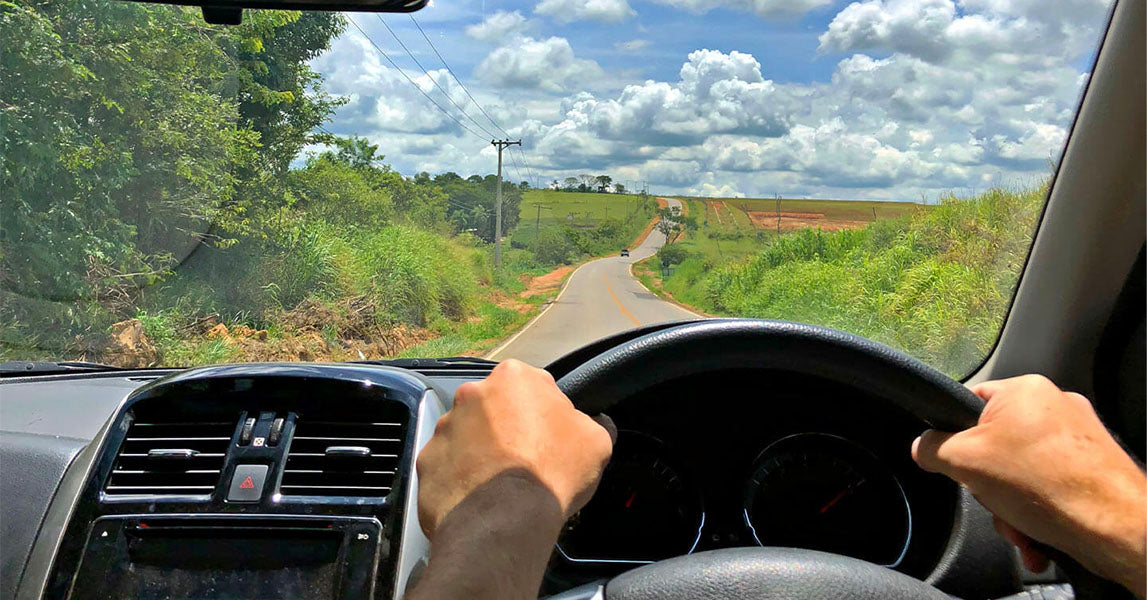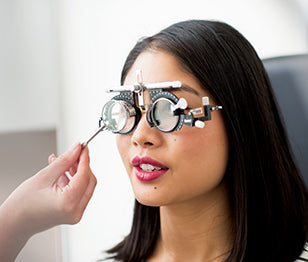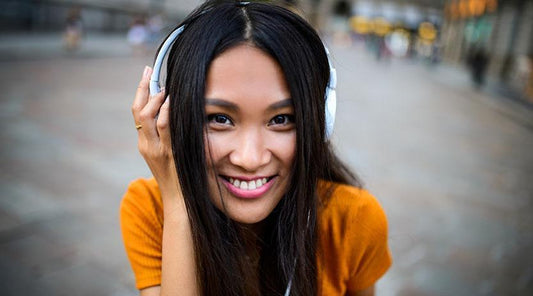Understanding hyperopia or long-sightedness

Hyperopia is the technical term for long-sightedness. That means objects up close can appear blurry, but things in the distance might look fine. It’s a common refractive error where the eye doesn’t bend the light correctly to focus on nearby objects.
Long-sightedness is the opposite of someone with myopia or short-sightedness, who can focus on objects up close, but things in the distance appear blurry.
Early detection is important in children as untreated hyperopia can lead to learning and developmental delays and other eye conditions.
While hyperopia is often missed in vision screening, an optometrist can diagnose long-sightedness as part of a routine eye test.
We recommend children have their eyes checked before they start school, and every year after that.
What does vision with hyperopia look like?
Click and drag the image below to see how hyperopia can affect your vision.

What will I experience if I have it?
About 7.2 million Aussies live with hyperopia or long-sightedness. While the most common symptom is difficulty focusing on objects up close – it’s not always a straightforward diagnosis.
Sometimes a person who is long-sighted can focus on objects up close but gets headaches, fatigue or tired eyes. And for those with significant hyperopia, objects in the distance might also seem blurry.
It can be especially difficult for children to articulate symptoms. They might squint when they are trying to focus, particularly if they are tired or feeling unwell.
It’s important to be attuned to any subtle signs and book an eye test if you have any concerns.
What's the medical explanation?
Hyperopia or long-sightedness is usually when the eyeball is a little too short or the cornea doesn’t have enough curve. This causes the light coming into our eye to focus behind instead of on the retina, resulting in the blurring of objects close to us. People tend to be born with this structural problem in the eye and it’s known to run in the family.
How is hyperopia diagnosed
Your optometrist will be able to detect any signs of hyperopia as part of a routine eye test. Using a letter chart, your visual acuity is checked. Then the optometrist will use a retinoscope or auto-refractor to examine how light reflects off your retina. This gives an indication of your prescription to the optometrist.
A testing device called a phoropter is then used to determine the power of the prescription required for glasses or contact lenses. It’s a quick and painless process.
Treating hyperopia
There are plenty of ways to correct your vision and improve your quality of life if you’re long-sighted. Your optometrist might prescribe glasses or contact lenses, recommend eye exercises or you might like to explore the option of laser surgery.
While there are no major complications if hyperopia is untreated in adults, it can have a significant impact on children. Difficulty focusing can not only affect their schoolwork but can increase the risk of eye conditions like lazy eye or crossed eyes.

We're here to help
Ask your optometrist if you have any questions about hyperopia or book an appointment today.
You might also like to read...
View all-

Understanding astigmatism
There’s a good chance you’ve heard of astigmatism before. It’s a common eye condition that causes blurred vision, discomfort in your eyes and headaches.
Understanding astigmatism
There’s a good chance you’ve heard of astigmatism before. It’s a common eye condition that causes blurred vision, discomfort in your eyes and headaches.
-

Learning more about cataracts
You’ve probably heard of cataracts – when the normally clear lens of the eye becomes cloudy. It happens because the lens becomes hardened, and it means a gradual decrease in...
Learning more about cataracts
You’ve probably heard of cataracts – when the normally clear lens of the eye becomes cloudy. It happens because the lens becomes hardened, and it means a gradual decrease in...
-

The ins and outs of colour deficiency
You might know colour deficiency by its other name – colour blindness. This name isn’t technically correct, as most people living with colour deficiency can actually still see colours.
The ins and outs of colour deficiency
You might know colour deficiency by its other name – colour blindness. This name isn’t technically correct, as most people living with colour deficiency can actually still see colours.


